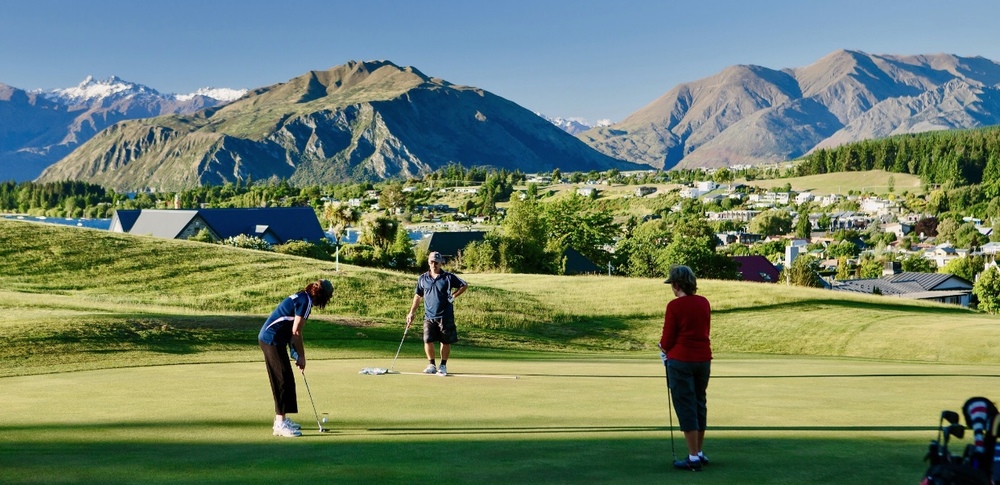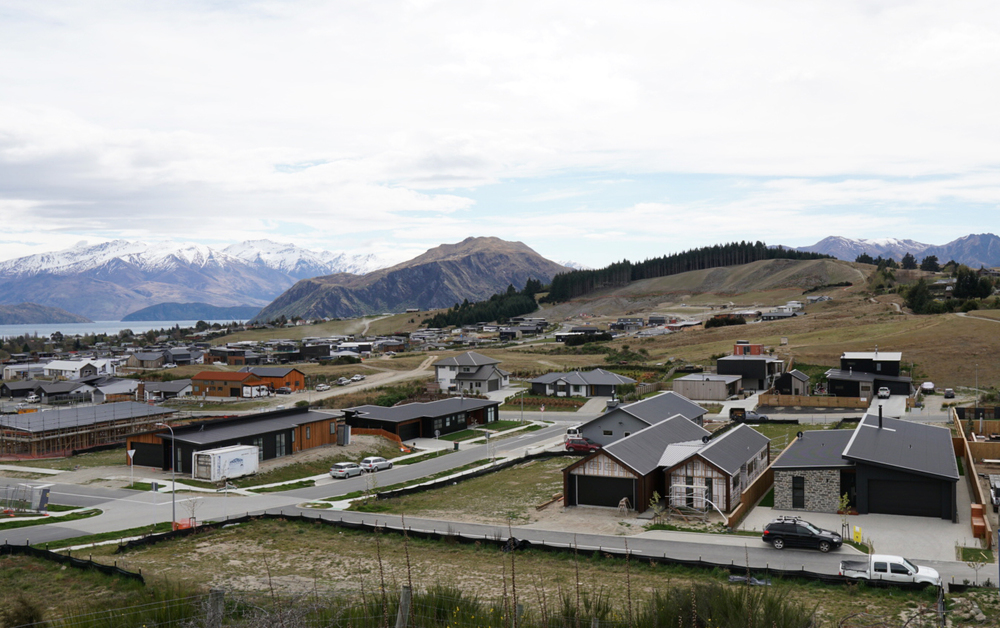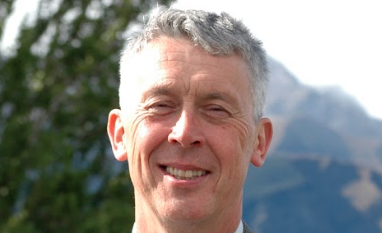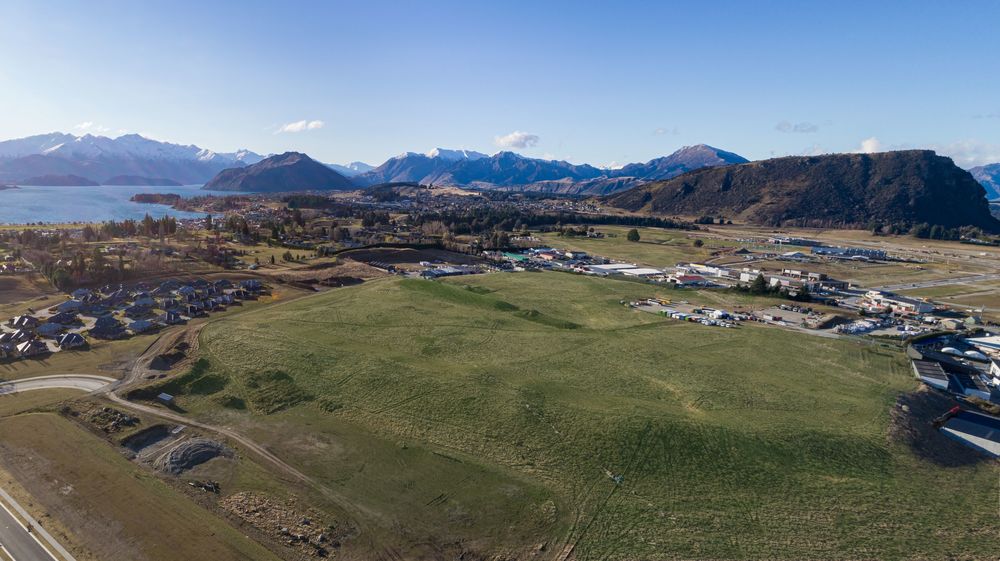‘Crunch point’: Wanaka’s housing growth examined (6min read)
Marjorie Cook
20 January 2020, 8:50 PM
 The Northlake development has the most sections to come on stream: 1218. PHOTO: Wanaka App
The Northlake development has the most sections to come on stream: 1218. PHOTO: Wanaka AppThe Wanaka ward population and housing stock could both double in size within 30 years but whether the development footprint will extend beyond established urban growth boundaries is not yet clear.
Wanaka presently has the capacity to develop 4,425 new sections, according to data supplied in November by Queenstown Lakes District Council communications team member Jack Barlow.
December 2018 population projections estimated the ward would require approximately 7000 new dwellings by 2048 to keep pace with residential growth.
A year ago, Wanaka was home to 7780 houses for 12,320 residents, but that housing stock needs to increase to 14,660 for 24,300 people by 2048.
The council information reveals that at the moment, section yield seems to be keeping pace with new housing demand, but infilling or intensification of existing sections, plus more greenfield development, could be needed.
Growing pains
Deputy mayor Calum MacLeod, of Wanaka, believes that realising Wanaka’s present undeveloped section capacity would “probably not” alleviate growing pains such as high property prices, high rents, low wages, and the affordability of living here.
“I would regrettably have to say probably not. There is no ‘silver bullet’ for these issues,’’ Calum said.
Calum believes most ratepayers would be “reasonably unaware’’ of the unrealised section development capacity and would “probably be more aware of the pace of development and the need to manage growth”.
“I have been saying for many years that if we were to stop issuing consents today and never issue another - which is of course illegal - we would [still] more than double in size. I am not sure how many people have heard this,” he said.
Calum noted the need to manage Wanaka’s growth was the main concern noted by the LINK Upper Clutha 3 Questions Ratepayers and Residents Survey in 2017 [and this] “would still be as relevant today’’.
Wanaka councillor Niamh Shaw says while Wanaka was not as far along the growth track as Queenstown, Wanaka had “reached a crunch point” where it needed to shift from developer-driven to community-directed development.
“Whether people are aware of the specific figures or not, I think most people are aware that many developers reserve sections to keep supply low and demand high. This is one of the factors informing our issue with affordable housing…
“We can perhaps alleviate the growing pains by putting in better structures to plan for, control and manage development; and ensure the infrastructure and services are in place for it,” she said.

A desirable place. “This is the lucky town in the lucky district, on the lucky island, in the lucky country. People are always going to want to come here,” Calum says. PHOTO: Supplied
Developers respond
Wanaka developer Allan Dippie said Willowridge Developments Ltd was “in the business of selling land’’.
“We have created a record number of affordable sections and also home packages over the last few years especially in Hawea and Luggate. We don’t reserve them or hold any stages of any project back from the market.
“In Hawea (Timsfield) we have another 70 sections presently ready to go in for title and 100 per cent are sold (to 70 individual buyers as we place a limit one section per buyer) and there are many first home buyers patiently waiting to get their projects started. Interestingly, the reason they are waiting to get cracking is that council are unable to process final completion certificates fast enough and, while the subdivision is completed, it’s just sitting there stalled until we can get the paperwork from council and into LINZ so title can issue. Everyone is waiting patiently for this to occur.
“In Luggate we would like to get cracking with more sections in Luggate Park but council failed to rezone this area residential during the district plan review. While that was a bad decision, they are certainly taking a lot of time to correct it so that’s what's holding us back there.
“In Wanaka we have a huge project about to start called Alpine Meadows, the first stage of which will go onto the market in 2020. We won’t be holding them back or reserving them or auctioning them off to get higher prices. They will be excellent mid-range sections of decent size and I think this is what the market is presently looking for in Wanaka,’’ Allan said.
Lane Hocking, of Universal Developments, has several developments on the go, including a Special Housing Area (SHA) for Lake Hawea township.
The Lake Hawea SHA is governed by legislation that has been designed to fast track land and housing supply in districts where supply and affordability are an issue. The cabinet approved the SHA in May.
"People know we roll up the sleeves pretty quickly on our developments. Clearview [in Wanaka] is a good example. We bought that land six months ago, have sold over 60 per cent of the 116 sections already and are about to start earthworks. We expect first titles late next year," Lane said.

Wanaka’s growth was the main concern noted by the LINK Upper Clutha 3 Questions Ratepayers and Residents Survey in 2017. PHOTO: Wanaka App
How big will we grow?
The Wanaka App, like many residents, is interested in how big Wanaka, Hawea, Cardrona and Luggate could potentially get, and whether current urban growth boundaries might be extended.
While it is highly unlikely, on the council information provided, that Wanaka would be built all the way out to Luggate or Lake Hawea, the data indicates continued growth is inevitable.
Wanaka councillors are keen for community-driven feedback on urban growth planning.
“This is the lucky town in the lucky district, on the lucky island, in the lucky country. People are always going to want to come here. Our job - all of us together - is to try to plan for this,” Calum said.
Calum said recent spatial planning workshops in Wanaka addressed the next 30 years of growth and encouraged wide ranging discussion.
“There have been a variety of scenarios envisaged by very diverse groups. One scenario had all of the projected growth contained within the current town urban growth boundary. It is an evolving process. We shall see what we shall see,” he said.
Present section development capacity
1. All sections presently capable of being developed are owned by private developers.
A council communications team member confirmed the council “does not have a land bank for future growth in Wanaka”.
The last large council-owned block, Scurr Heights, was sold to Universal Developments for $15.65 million in 2016, to raise funds for community projects including a $6 million contribution to the new Wanaka pool.
2. The undeveloped Wanaka sections are contained within 11 areas offering a combined yield of 8729 sections. Developers have already released 4304 sections and have 4425 sections to go.
3. The Northlake development has the most sections to come on stream (1218).
There is capacity to create 987 more sections in the Three Parks/Ballantyne Road area.
North West Wanaka, comprising Kirimoko and The Heights (formerly Scurr Heights), has a remaining yield of 518 sections (450 at Kirimoko).
South East Wanaka, comprising five separate developers, has a remaining yield of 509 sections (281 at the Bright Sky development).
4. Hawea and Cardrona could also get much bigger.
Hawea Township has a remaining yield of 590 sections, with 400 contained in a special housing area.
Cardrona has 570 sections waiting to come on stream, all at Mt Cardrona Station.
5. District plan processes could allow for even further intensification.
The council document suggests the 762 section capacity in Wanaka’s town centre has been completed and no yield exists. Similarly, no further yield exists in Luggate or Hawea Flat.
However the council communications spokesperson clarified that the document “doesn’t include any operative district plan or proposed district plan intensification opportunities, so built out areas (such as the Wanaka town centre) will have more capacity than the document suggests’’.
6. Wanaka’s remaining section yield is modest compared to Queenstown’s. There, developers have been steadily chugging through a 29,466 section capacity and have 16,883 sections to go.

Deputy mayor Calum Macleod says there is “no silver bullet” for improving housing affordability in Wanaka. PHOTO: Supplied
Impact of unrealised section capacity
About 50 per cent of section development capacity has been realised in both Wanaka and Queenstown.
The Wanaka App sought council comment, through its communications officer Jack Barlow, on whether good progress was being made, from a planning point of view, in realising that capacity.
The Wanaka App also asked if the district was on track for meeting the demands and pressure of growth and were reassured that yes, we are.
But that comes with caveats: zoning, keeping a consistent development pace and meeting the challenge of providing affordable houses in the under $580,000 price bracket.
The following quotes have been provided by Jack but have not been attributed to a particular council manager. The Wanaka App has sought clarification of the manager’s name and job title but that information had not been provided at the time of publication.
“From a section capacity view and monitoring of new housing stock, housing stock has been increasing by about 4.8 per cent per year, or 733 houses, annually since March 2016,’’ the council statement said.
“Our December 2018 Queenstown Lakes District Population Projections assumes that between 2018-2048 there will be an increase of 34,900 residents (or 16,930 houses), which equates to an annual change of 564 houses required every year for the next 30 years.
“So if our housing stock remains on the same trajectory as the last three years then, yes, we are on track for meeting section capacity demands. However, that does come with a caveat, while we have enough zoned land in the Proposed District Plan and assuming housing stock continues at the same pace as the previous three years.
“There is a shortage of dwellings in the under $580,000 value band and a lack of choice of small housing typologies, so our challenge is to develop a strategy that encourages a mixture of housing choice with a variety of price points,’’ the statement said.

The council says it’s unlikely Wanaka would be built out all the way to Luggate and Hawea, as this area is not zoned for development and none is anticipated.
Issues with realising development capacity include a developer's own project goals, time frames and financing, as well as the process of getting consents and meeting conditions.
The Wanaka App asked: does the council have any information about or hopes for a projected time frame for realising the capacity?
“Unfortunately not. Council’s role is relatively limited to ensuring there is adequate land supply for a variety of housing. Beyond this, development is very much tied in with market conditions and the developers’ ability to deliver,’’ the statement said.
The Wanaka App also asked: how big could the Upper Clutha area, comprising Wanaka, Hawea, Cardrona and Luggate potentially get?
“It is estimated that the Upper Clutha will require approximately 7000 new dwellings over the next 30 years, with location being guided by the Proposed District Plan.
“We anticipate there will need to be a mixture of both infill/intensification of existing sites as well as some greenfield.
“It is highly unlikely that Wanaka would be built out all the way to Luggate and Hawea, as this area is not zoned for development and none is anticipated.
“The draft Spatial Plan is due to be released in autumn next year. Initial findings from the community consultation sessions include a preference to consolidate growth in order to protect the environment, landscapes and soils.
“The outcomes of the Spatial Plan workshops are still being compiled but should be available publicly around January/February 2020,” the statement said.
Footnote: The council’s March 2019 Quarterly Monitoring Report, as required by the National Policy Statement on Urban Development Capacity, reported that in the year ending March 2019, the total number of dwellings in the Queenstown Lakes District was 16,705.
The count of dwellings in Queenstown had increased from 8,625 (year end March 2018) to 8,998 (year end March 2019). This is up 4.3 per cent or 373 additional dwellings.
In Wanaka, the count had increased from 6,144 to 6,402 (up 4.2 per cent or 258) and Arrowtown had increased by 5 dwellings (0.4 per cent) to reach 1,305.

